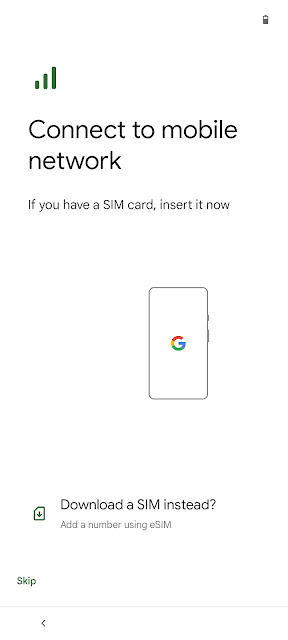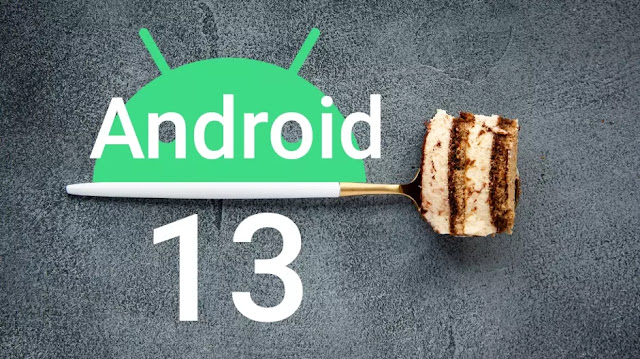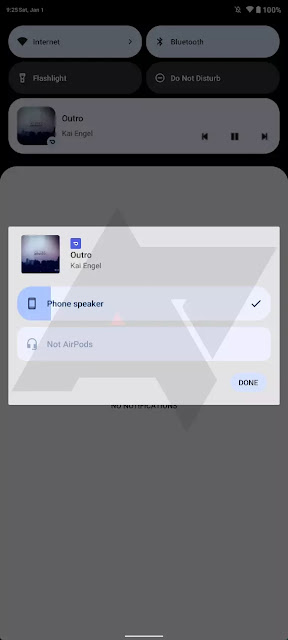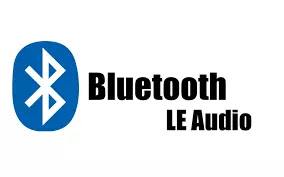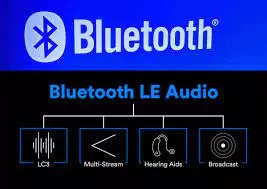Android 13 include Google unique solution to eSIM limitation
The Google Pixel 6a Retail Box Has Been Leaked
Google has confirmed that I/O will take place on May 11-12
Android12L: A fresh design for larger screens
[Exclusive] CAD renders of the Google Pixel 7 Pro has leaked
The Google Pixel 7 Series is expected to be the year’s most popular Android smartphone range, competing against Apple’s iPhone 14 series and Samsung’s Galaxy S22 series. Every year, Google’s Pixel smartphones are released in October, but today, Smartprix is presenting the Google Pixel 7 Pro for the first time. Steve Hemmerstoffer aka OnLeaks has rendered the Google Pixel 7 Pro in crisp 5K quality. Take a look at them below.
These exclusive Pixel 7 Pro photographs show how the design has progressed since the Google Pixel 6 Pro, which is now on the market. The Google Pixel 7 Pro will include a 6.7 to 6.8-inch curved display with a single punch-hole selfie camera on the front. It will have an OLED display with a high refresh rate that will compete with Samsung’s current flagship, the Galaxy S22 Ultra.
On the other hand, Google has made some improvements. While Google’s characteristic dual-tone design has been kept, the visor-like back camera module has been fused with the new frame, as shown in the image. It appears to be blended with the frame, similar to what Samsung accomplished with the Galaxy S21 series lately.
Dual stereo speakers and a USB Type-C charging connector are located on the device’s bottom, while a SIM card tray is located on the left side. The gadget includes a power button and volume rockers on the left side, and antenna bands can be seen on all four sides.
A horizontal camera strip holds three cameras: a main wide-angle camera, a periscope telephoto camera, and most likely an ultra-wide camera. A microphone unit, as well as a pair of sensors, are located in the camera module. The camera module protrudes slightly.
The Pixel Pro sports curved edges and a design comparable to the Samsung Galaxy S22 Ultra, albeit it will be somewhat thinner than the S22 Ultra, which is 8.9mm thick against 8.7mm for the Pixel Pro. It’s possible that this is due to the battery’s different sizes. The device’s thickness is 11.2mm when the camera bump is included. The device’s dimensions are roughly 16376.68.7mm.
The first developer preview of Android 13 is now available
Day after day, billions of people all over the world use their Android smartphones to assist them in accomplishing their goals. Android’s ability to perform effectively for each of them is due in part to a collaborative effort with you, our developer community, who share input to help us improve Android.
With the Android 13 Developer Preview 1, we’re giving you a first peek at the future version of Android. We’re continuing some essential themes in Android 13, including privacy and security, as well as developer productivity. We’ll also expand on some of the more recent changes from 12L to help you make use of the 250 million or more large-screen Android smartphones now in use.
This is only the beginning of Android 13, and we’ll have plenty more to offer as the rollout progresses. Read on for a taste of what’s new, then go over to the Android 13 developer site for more information on Pixel downloads and the release schedule. As always, getting your input early is critical to ensuring that it is included in the final version. We’re excited to hear your feedback, and we appreciate your ongoing support in making Android a platform that works for everybody!
Themed application icon
In Android 13, we’re extending Material You dynamic colour beyond Google applications to all app icons, allowing users to choose between icons that inherit the hue of their wallpaper and other theme settings and icons that don’t. Only a monochrome app icon (for example, your notification drawable) and a change to the adaptable icon XML are required from your app. All developers are encouraged to supply suitable icons to allow users who have opted in to enjoy a consistent experience. Themed app icons are currently only available on Pixel smartphones, but we’re working with our device maker partners to expand their availability.
Users may choose to have customised app icons starting with Android 13. This feature tints app icons incompatible with Android launchers to match the colour scheme of the user’s wallpaper and other themes.
To use this functionality, your app must have a monochromatic app icon that is linked from the manifest’s adaptive-icon> element. If a user has activated the Themed icons toggle on their device, the system determines the tint colour by looking at the colour of the user’s wallpaper and theme, which it then adds to the monochromatic app icon.
Specifications
The following requirements should be met by your monochromatic app icon:
It must be in SVG format and not a photograph.
We propose that the logo be contained within a 90 × 90 dp container with a 36 x 36 dp area. If the logo must be larger, it must be at least 60 × 60 dp.
You may utilise the alpha gradient if your logo is three-dimensional.
➊Container area (90 x 90 dp).
➋ Logo area (36 x 36 dp recommended, 60 x 60 dp maximum).
At the heart of it, all are privacy and security
People would like an operating system and apps they can trust with their most private and sensitive data. Android 13 focuses on establishing a responsible and high-quality platform for everybody by delivering a safer environment on the device and more controls to the user, which is central to Android’s product principles. We’re adding a picture picker in today’s release to allow users to safely share photographs and videos with applications, as well as a new Wi-Fi permission to reduce the requirement for apps to have location permission. We propose that you check out the new APIs and see how they affect your project.
A rumored Google Pixel foldable powered by Tensor may look like
As news about the rumoured Google Pixel foldable has slowed down, for the time being, fresh insights regarding the device have appeared due to the newest Android 12L beta update.
The next image depicts a similar animation, but this time with the device open. When compared to the taller Z Fold 3, the foldable looks to have a larger shape when opened. The design is compared to the newly introduced OPPO Find N, which writer Nick Sutrich praises for not requiring you to spin the smartphone to get the optimum fullscreen movie experience.
The animations are aesthetically similar to the SIM animations when setting up a new Pixel smartphone, which might lend validity to the graphic representing a potential foldable, according to Google. It’s conceivable, though, that it’s only a placeholder for a foldable Android smartphone.
Google’s foldable ambitions have been put on hold, potentially to tweak the design while keeping an eye on the foldable market, which is now controlled by Samsung. However, as Android 12L development continues, we may hear more about the reported gadget. After all, a Pixel foldable, along with the greatest foldable phones and tablets, is the goal product for Android 12L.
Google may redesign Android 13 audio output picker with a splash of color
Since some users have just recently gotten the Android 12 upgrade, rumours of Android 13 are beginning to surface. According to what we’ve seen so far, Android 13 will be more of a quality-of-life upgrade, with improvements and additions to make your Android experience even better. Now, Android Police has detected an intriguing update that might find its way into Android 13 to provide a more unified appearance to the operating system.
Some users have just received the Android 12 update, but now reports are starting to appear on Android 13. From what it looks like, Android 13 might not be a huge update, but rather a huge one. quality of life with tweaks and features to make your android experience better. Now Android Police have spotted an interesting change that could come to Android 13 to make it look more cohesive.
The output selector is the button on the top right that provides information about the device currently playing audio and may have Bluetooth transmitting devices, headphones or earphones, or any type of speaker you may have. -be connected to the phone. a useful change to this feature, which makes it appear from the bottom of the screen. On Android 13, it looks like Google might give this menu a new layer of color for a more cohesive look.
According to Android Police’s insider, the functionality works in the same way. However, as you can see in the pictures above, the button for it has vanished (but this could be a bug or some minor change, or work in progress). The functionality is also accessible through the Settings menu.
The biggest distinction is in appearance. The previous volume sliders have been replaced with newer, more information-rich ones that match the complete name of the audio device. Instead of being labelled as disconnected, disconnected devices will be greyed out, as is the case with the present version of the functionality. In addition, the circular icons for each device have vanished. This is the latest version.
This isn’t the first time we’ve heard about Android 13’s upcoming upgrades. First and foremost, we now know that Android 13’s internal codename is Tiramisu (in line with the known dessert names Android versions have been getting for years now).
We previously reported on a rumour claiming that Android 13 will have Bluetooth Low Energy (LE) audio. It will provide customers with longer battery life as well as a more reliable audio connection. We also know that Android 13 will allow you to customise language choices for each app separately.
Bluetooth LE (Low Energy) audio will be supported in Android 13
Many Android phones are yet to receive the newest version of Android, which was officially launched on October 19. Samsung deserves credit for releasing the One UI 4 upgrade (which features Android 12) faster than expected.
And there are some nice rewards for Android users using Bluetooth LE Audio, including longer battery life and a more stable connection – all without having to endure reduced audio quality on mobile devices. Android 10 was the first version of the open-source operating system to include Bluetooth LE Audio Streaming for Hearing Aids (ASHA). This made it possible to support compatible headphones and earphones, resulting in significant savings and power consumption without loss of audio quality.
For example, because hearing aids are worn all day, some individuals need to preserve energy (except when sleeping). Bluetooth LE Audio was born from this technology. Laurel, the head of audiology at GN Hearing Christensen, was recently sued by AndroidPolice. The firm creates high-tech hearing aids that need extensive therapy and other energy-intensive technology. “We have to look about energy utilisation from that viewpoint,” Christensen added. For real broadcasting – for music and phone calls – we aim to utilise as little energy as possible.
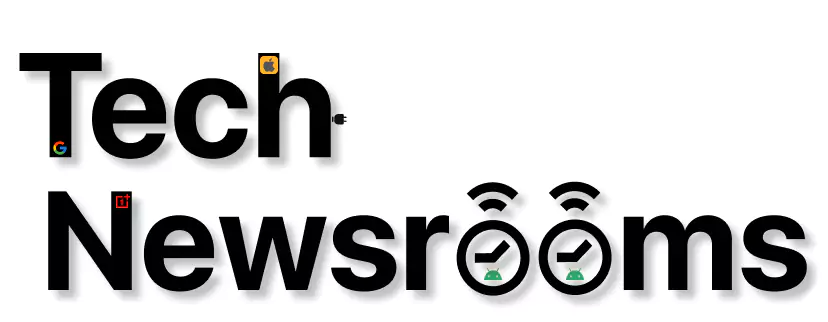





![[Exclusive] Cad Renders Of The Google Pixel 7 Pro Has Leaked [Exclusive] CAD renders of the Google Pixel 7 Pro has leaked](https://blogger.googleusercontent.com/img/a/AVvXsEhtK8TsrJCGVJWic10NF29Tu4vi26KxwMDWGj0FSVhTbxGEhpr4FrWJig4I-ioJ19SWqprc319Hzd9GSL9VNFslo6L2LEuYfCK03FL3mdMWiW0xFpRiyBWvrfbieV2h61DcdFqFVUi8B_CDlX1jvjvx95RJTk5sQSDzoGK71h83ornm1D_zmx08YdUIlw=w640-h360)
![[Exclusive] Cad Renders Of The Google Pixel 7 Pro Has Leaked [Exclusive] CAD renders of the Google Pixel 7 Pro has leaked](https://blogger.googleusercontent.com/img/a/AVvXsEim_H-ZOTEUFJu0D_J2rD24dZ2egemR9a4VwbQgtVowT5gpmm1we6I6hsSk-wlEPW7ngoXh1-daFazo_TyR02WLLpztIDOsJucOcQzRF4epe0t786run_enlFm2TjRNXuzr5ZjWgUkRpBCqOENGjtTVSUXZPSbiCb_895BYg4FZ1NJjAYFbl2gJk94AaQ=w640-h320)
![[Exclusive] Cad Renders Of The Google Pixel 7 Pro Has Leaked [Exclusive] CAD renders of the Google Pixel 7 Pro has leaked](https://blogger.googleusercontent.com/img/a/AVvXsEjup_b5apjblqSrzkjtnL3XXp03K3lhCIfupaJfmmlx-aXXNFmW_QgMBKvaDO2vcEF6_7d-n_FkkctLs3y4mdUOPqG4pKhffcZsCnJ11Uh4x2mn3xx32S2mgAGwh760yzaIvL4AJhK3l7LRCX5vKPtrSaAkjREvc9IvwrUi66H38DqaHDWOtDrZvWQPDA=w640-h552)
![[Exclusive] Cad Renders Of The Google Pixel 7 Pro Has Leaked [Exclusive] CAD renders of the Google Pixel 7 Pro has leaked](https://blogger.googleusercontent.com/img/a/AVvXsEhL20L4ENKZsHTvGYQRTTKT8Tyu52MQQaOsVwxvf9HOYbEqlMyRmsXrh8KZeA-xOpXxqPDvpmHjSMCLVftuzk_lrXJyUsZ44PHq0NQNz_l7YYO1qOlief4g8kcrS5L6tHON13T6epfcItUrkdu4N1tW24NhvVPUQnhy9ppZlj2-8vGLWmVN70lTynAJhA=w640-h510)
![[Exclusive] Cad Renders Of The Google Pixel 7 Pro Has Leaked [Exclusive] CAD renders of the Google Pixel 7 Pro has leaked](https://blogger.googleusercontent.com/img/a/AVvXsEib4g2dDSbHBz6GyGzy4tYFZWVXEYf7OwVpgn6FEqQTVgrv3qNu8X_e5o3h-1pubnDVyvlnVLoHz7-VbtASkDpdSq9kpL-AA1nTsHashx7VmTRX6xIiO-1AOTS8UB5HHru6nWtPBsfohxbNAZGPH0MxeYFc6FxvZ89mtxowsgGLE_FE4w2DqCHEfMAv4Q=w640-h504)
![[Exclusive] Cad Renders Of The Google Pixel 7 Pro Has Leaked [Exclusive] CAD renders of the Google Pixel 7 Pro has leaked](https://blogger.googleusercontent.com/img/a/AVvXsEi6DsfRDEmkP5hS3_y_B0avggQRbidBrYJogaHNRmYxLftBbzLkB_sQejL5Dk5LQMxTWrs9_6LzlFo5GxBywojbMFo5EGmh1O8_gd6oAxmGaVDs_v-PBxFVzQz1gpBIta4LO2sMQmNBgRQVbbOmqCFpBZcI8kdUqvREMjqtOhwyO8P3r81o8Cimjvg7Tg=w640-h360)
![[Exclusive] Cad Renders Of The Google Pixel 7 Pro Has Leaked [Exclusive] CAD renders of the Google Pixel 7 Pro has leaked](https://blogger.googleusercontent.com/img/a/AVvXsEifXW6A2ZIyA2GfY1M9LDXmKcj07b75SUGJ9QQO8vFwVDvYurSjeqbCPubFwKUbgeDLkLV_cAxTNIB1bjz6-uzRytcCM4CYtfm9NoKudkjZwUz4tikbMpIWiHjczUeoKlxKk3902GAJDVUhlnPdvbmqVy9MMA_YuH0lTj39gNChZbE6E7ceeqATJmj09g=w640-h360)





